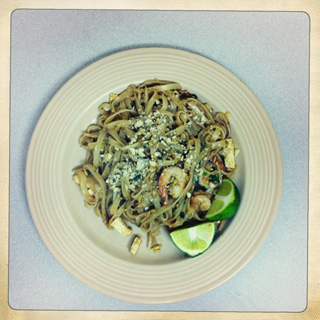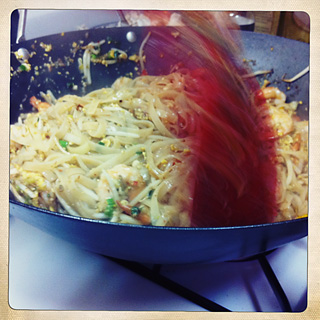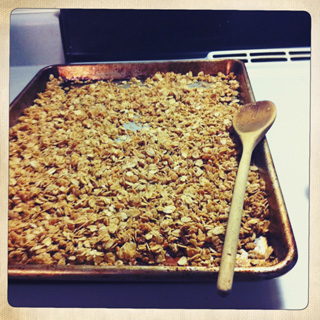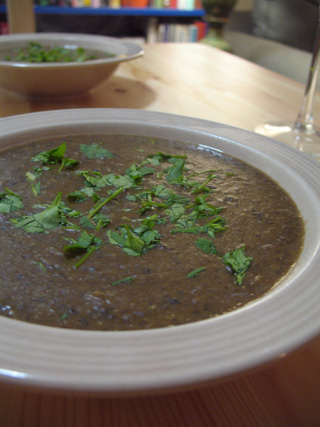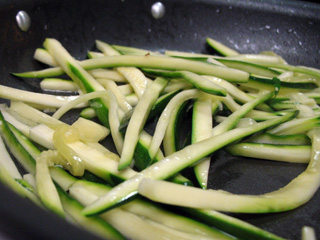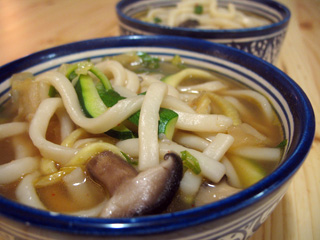I can't imagine what was going through the head of the first person who decided that repackaging an animal in its own innards was a good idea — seems like it would be hard to arrive at this conclusion without very intense deliberation (oh my! this meat emulsion has accidentally fallen into this cleaned intestine, and it's delicious!) Nevertheless sausage, mostly in the form of various offerings at Berkeley Dog, has become the perpetual exception to an otherwise meatless existence. Following the unexpected arrival of a Charcuterie book from Annie, it's been in the back of my mind to take advantage of these under-appreciated pig parts. Reading about all of the cured meats builds a healthy appetite, though it also nurtures a slight but nagging fear of botulism. What's life without risk! We'll stick to fresh sausage for now — mostly since the chosen packing method isn't particularly conducive to sanitation.
The original intent of the weekend was to head out climbing somewhere for a few days with Nick. Extended intense outdoor activity was cut short by weather and scheduling issues — so the plan was to fall back on some equally absurd culinary adventure. It's not like we were prepared to pack sausages — far from it. Chrome plated sausage cannons are available on Amazon but carry the price tag of a used car — an unlikely purchase. Nothing so fancy is required at any rate. As it turns out one can stuff an astonishing 6 sausages an hour with a sawed-off turkey baster and a wooden-spoon turned ramrod. I might recommend exploring other options. Nevertheless, the mission was accomplished. You could just make lamb patties, which I'm sure would be equally tasty.
You should be able to get the necessary lamb or pork fat from most meat establishments. Lamb fat comes highly recommended — we even rendered some for imparting lamby flavors in the least expected circumstances. The sausages were staggeringly good given the circumstances of their creation. I'd say it's worth trying this out at least once. In the words of the book's sender: "Like a fine terrine, let your love be a meat pot." Words to live by.
Makes 6 Large Sausages
8 Hours Prep, 10 Minutes to Cook
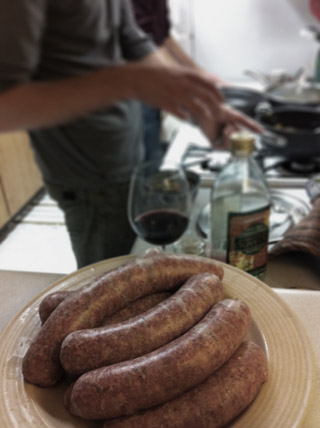 The Goods
The Goods- 2.25 Lb. Lamb Shoulder
- 0.5 Lb. Lamb or Pork Fat
- 0.25 Cups Rosemary or other desired herbs and spices
- 3 Cloves Garlic, mashed or minced
- 0.8 Oz. Salt
- 1 Tsp. Ground Black Pepper
- 0.5 Cup Red Wine, chilled
- 6 Feet Sausage Casing
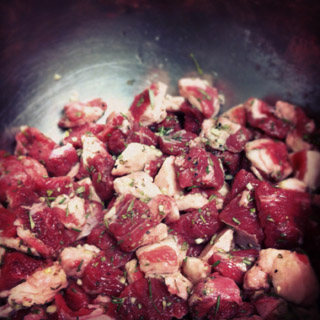 The Procedure
The Procedure- Chop the meat and fat into smaller chunks, removing any connective tissue. Mix in the herbs, salt, and pepper and let stew for several hours in the refrigerator (or until very cold, almost frozen, in the freezer.) Place any grinder parts, and the bowl you'll use for collection in the freezer for a while before starting to grind. Also let the casings soak in warm water for an hour or so before stuffing, and flush with cool water before using.
- Grind the meat into the receptacle bowl, and then mix (either with a stand mixer or by hand) until somewhat pasty. Add the red wine and mix for a while longer. Let chill in fridge for another hour or so, or in the freezer if you're impatient.
- By whatever means available to you, stuff the sausage mixture into the casings. You may, of course, completely skip this step and simply make patties instead. If making sausages, twist off every six inches or so.
- Cook by your favorite means — we braised them in a pan, but anything should work. Low heat and time is best.
 NB: Please ignore the large amount of fat that escapes during cooking… it's the good kind of fat...
NB: Please ignore the large amount of fat that escapes during cooking… it's the good kind of fat...




